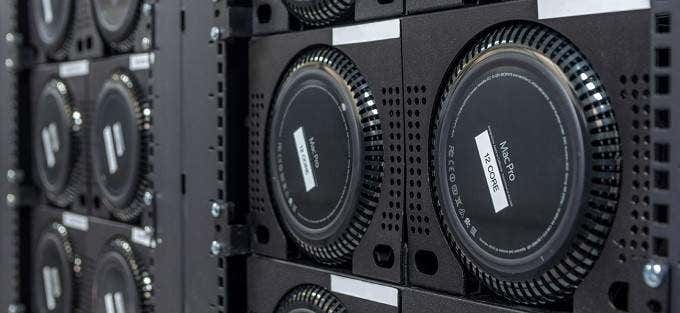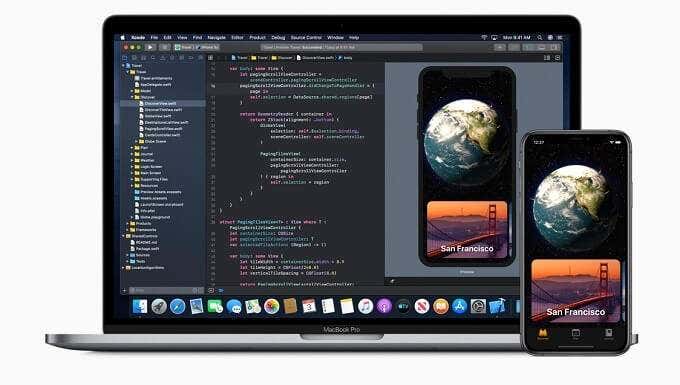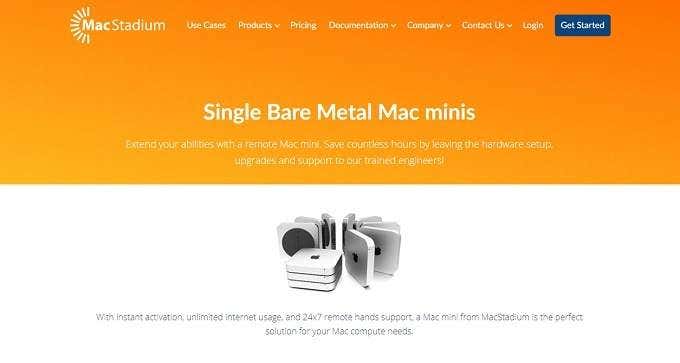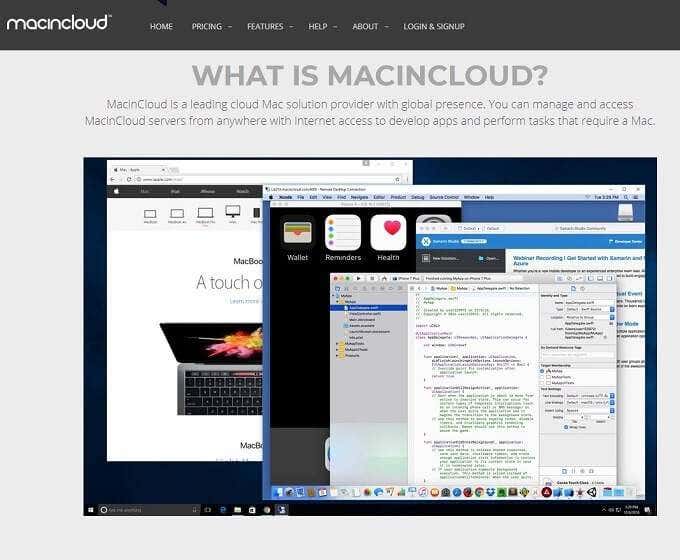Can cloud services like MacinCloud and Mac Stadium replace a real physical Mac? After all, there are plenty of reasons people love their Apple computers. The hardware is one of the most obvious ones.
Apple computers have some of the best hardware in the industry. Their computers are ergonomically pleasant, the screens are a pleasure to look at and the experience is generally one that creates some pretty hardcore fans.
Still, design and hardware are only half of the story. macOS and many Mac-specific software packages have their dedicated crowds. Buying a Mac can be expensive, so is there any way to easily access the Mac software world without spending hundreds of thousands of dollars on a physical Mac?
While you might think of making a Hackintosh, a cloud-based Mac could be a viable alternative.

What Is a Cloud-Based Mac?
Usually, when you rent a cloud-based computer, it’s a virtual machine running on a massive, multi-core server. That’s not quite the case with using a Mac in the cloud. That’s because Apple’s macOS license agreement ties the software to the hardware. It’s illegal to run macOS in a virtual machine (not on Apple hardware) or to run it on non-Apple hardware.
That means the cloud-based Mac you are using is an actual Mac hooked up to remote computing systems. In that sense, it is just like using a local Mac you’ve got right in front of you. However, there are some serious caveats to take into account before walking down Cloud road.

The Advantages Of Cloud Macs
The biggest advantage of using a Mac in the cloud is that you only pay for what you use. Buying a Mac is expensive. There’s no way around that. The Macs in the data center are shared among thousands of users who each only use a little bit of time on each machine.
So that cost is split between many people. Yet whenever you log on, your Mac configuration should be waiting for you. Pricing can be per hour or a fixed fee for a given period. So cost control is easy and if you need access to macOS now there’s no other way to get it for such a low price.

This also means you don’t have to deal with all the headaches of owning a physical Mac. You’ll never have to worry about your model being too old for the latest version of macOS or having to wait for Apple to send back a critical work machine that’s died.
You can also access your cloud-based Mac from anywhere, using various remote desktop clients. Depending on the specific service provider of course.
In short, this is the cheapest, most hassle-free way to use macOS, BUT the specific things you want to use macOS for is a major factor in the suitability of cloud Macs.
The Limitations Of Cloud Macs
There are going to be some special considerations when the Mac you are using is hundreds of thousands of miles away. For one thing, you probably won’t get much joy out of applications that need as little lag as possible.
When we looked at game streaming services such as Google Stadia and GeForce Now, it became clear that eliminating latency over the internet is a huge engineering task. Not the sort of thing cloud-based Mac providers can justify doing for their most common use cases.

This brings us to the next big issue: the internet itself. If you (for example) buy an actual MacBook, then it will work regardless of whether you have an internet connection. So if you’re in another country, on a subway, or a plane there is no issue. If you can’t access the net for any reason, you can’t access your cloud Mac.
The next potential issue is how much control you have over the cloud Mac. Do you have administrator access? Can you install any software you want? Is your data private? The answer could be yes to all three questions, but not necessarily so. Be aware of the terms and conditions of any service you do sign on with.
Who Should Use Cloud-based Macs?
In our opinion, cloud-based Macs are not a replacement for a personal Mac. Instead, they are better suited for other use cases and can be better than a fixed, local Mac computer.
One very good use case is for macOS and iOS app developers. Both of these platforms are hot and many developers would like to make software for them, but the cost of hardware is prohibitive. Now you can code, test, and publish your applications by simply paying a monthly subscription.

Some institutions have also used cloud-based Macs for their computer labs. Students can do their Mac projects on non-Mac terminals, which are much less expensive to replace and don’t require on-site tech support to maintain them. Some people even use cloud-based Macs as web servers for their small websites.
One very important use case for these hosted Macs is for professional users. If you need to run workstation-grade software (such as macOS 3D rendering jobs) that needs a Mac Pro, you can get the job done by renting one remotely.
MacinCloud vs Mac Stadium: What’s On Offer?
At the time of writing, there are two major players in the cloud-based Mac industry: MacinCloud and Mac Stadium. While it is tempting to compare these two in terms of which is “best”, that doesn’t make that much sense, since the two companies offer services that only partly overlap.

Mac Stadium is mainly known for having thousands of Mac Minis in its data centers, as well as smaller numbers of Mac Pro, new Mac Pros (soon), and a few lone iMac Pro machines. They have a lot of custom infrastructure built to make cloud Macs feasible. It’s also the more straightforward solution for the average user.
Rent a single dedicated Mac Mini for a fixed monthly prize and do just about anything you want with it. From there you can also rent time on the aforementioned Mac Pros or pay thousands of dollars for enterprise-grade Mac cloud solutions.
For single users, this is probably the best option of the two. $79 a month for your own dedicated Mac Mini with 24/7 support is a pretty compelling deal.

That being said, MacinCloud offers some intriguing pricing options. You can sign up for a “pay-as-you-go” option. This means you pay for the hours you use and no more. The base amount is $30 for 30 hours, but this varies as you customize your desired hardware.
MacinCloud also offers eGPU options. Their other plans are more enterprise-focused and offer servers at fixed monthly prices with various limitations depending on what you choose. MacinCloud is what we’d suggest those looking to use the technology for app development consider first.
Are Cloud Macs a Viable Alternative To “Real” Macs?
The answer to this question is yes. Absolutely. As long as your use case fits the limitations of the technology and service. They aren’t an alternative to your personal Mac and the way most people use them, but it’s a brilliant offering for people who don’t use Macs as part of their normal workflow but need tools to tap into the Mac market. The good news is that many of these plans offer a short trial, so why not go see them for yourself?